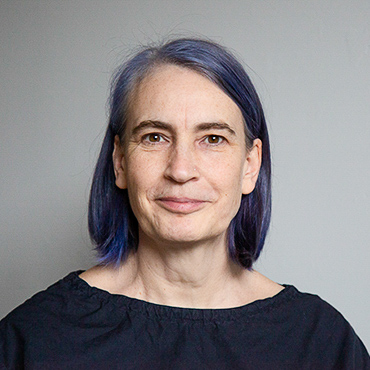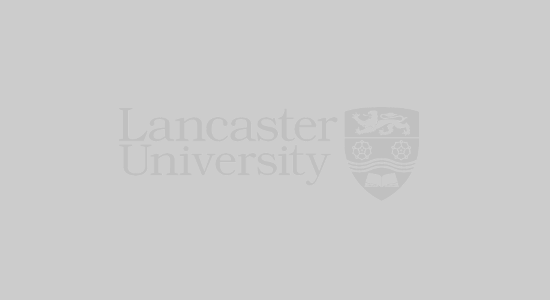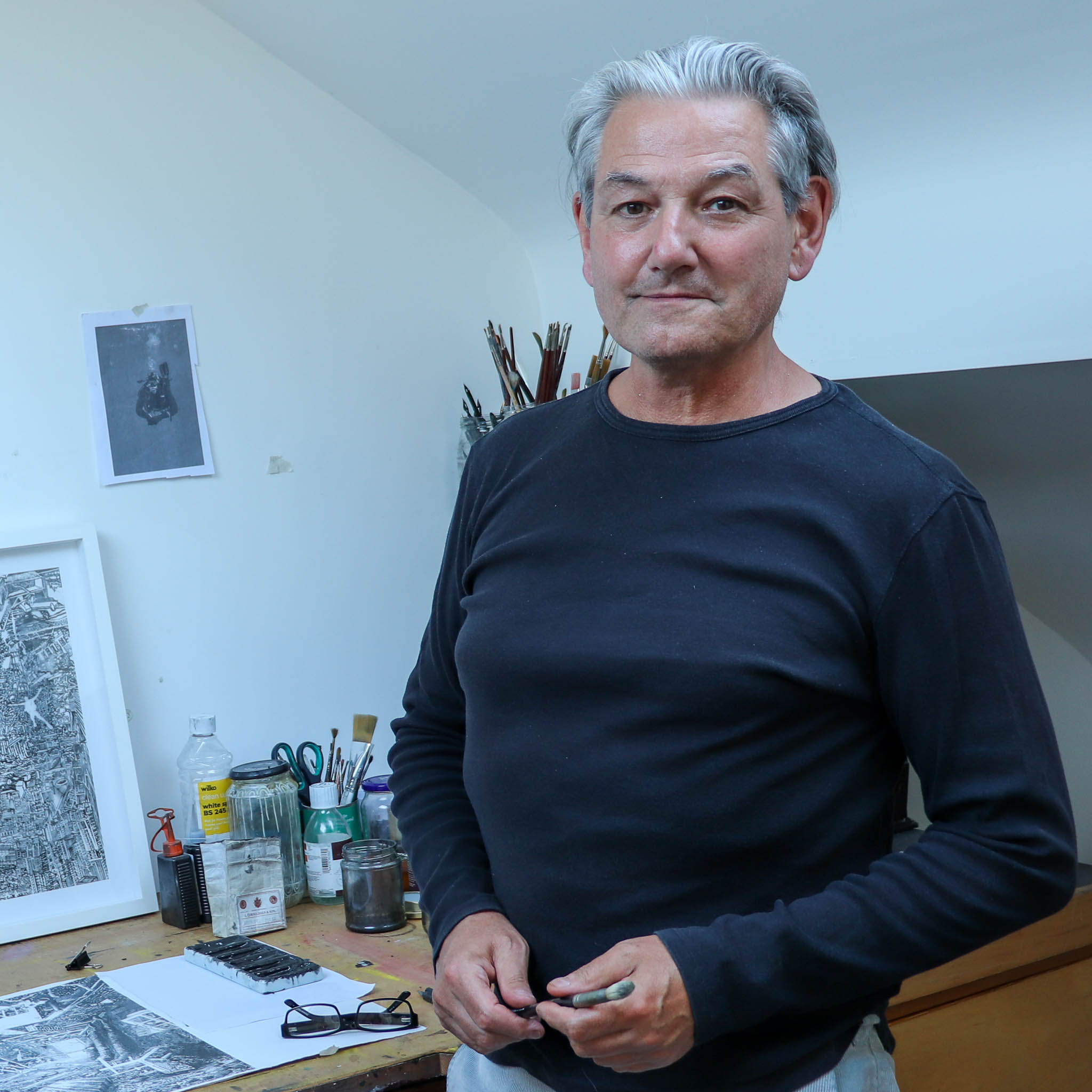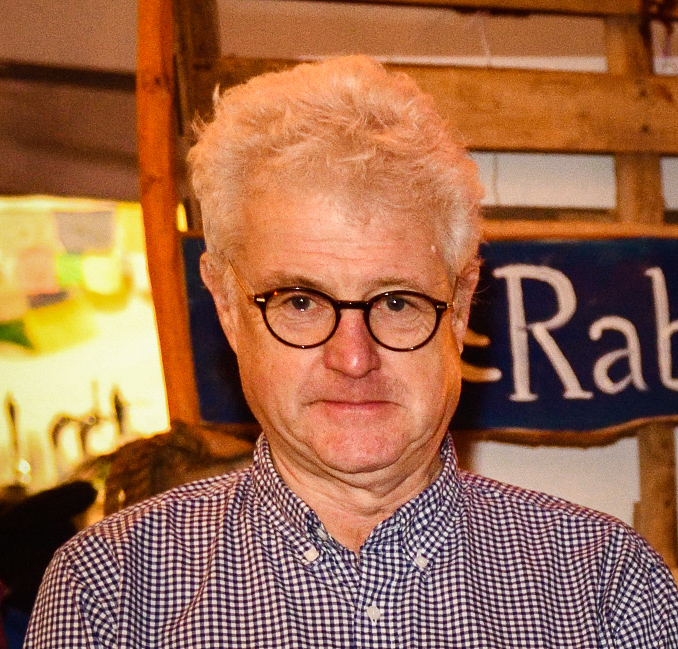
Meet the Artists
An MA in Fine Art is about honing skills, being challenged, and building your network. And it's about the chance to work with, and learn from, established artists practicing in your media.
Scroll to content
Get to know a little bit about the artists who will be teaching on the MA Fine Art programme. The staff may change from time to time, but the following gives you an idea of our current artists.

Jen Southern
Jen Southern is the Course Leader for MA Fine Art, she is an artist, senior lecturer in Fine Art and New Media, and an Associate Director at the Centre for Mobilities Research. Her work is a hybrid of art practice and mobilities research and has been exhibited internationally for over 30 years. With an ethos of shared authorship she collaborates with artists, technologists and members of the public to produce live installations that combine material and digital experience. Her recent practice is focussed on generative encounters between more-than-human systems that grow: from grass seeds, to gardeners, to machine learning.
-

-
Mobile Utopia. 2017.


James Quin
My research examines the temporal conditions of painting and the potential for repetitive strategies in re-thinking these conditions in ways that move beyond those ascribed to painting by convention. Starting from the premise that repetition is an engine of difference, I am also interested in the ways that an encounter with repeating images, specifically painting, temporalises the space of their encounter. In order to test the temporal conditions of the static image and the temporalisation of space, I explore the role of parallax motion in relation to paintings exhibited in series within labyrinthine installation spaces.
-
Repetition from Reproduction (after Picasso). Oil on linen, 28x26cm. 2020.

-
Promethean Library, Solaris,1972. Oil on linen, 58x56cm. 2021.


Gerry Davies
This group of drawings (below) are speculative fictions on climate change, they imagine a future radically changed by rising sea levels and a Terra Incognita that we will all have to come to know and live with. They have a simple premise, it's that - One Day Someone Will Scuba Dive Over Your House.
Influenced in part by the ecological writing of Donna Harraway, Anna Tsing and Bruno Latour, the imagery owes debts to J.G. Ballard's early pulp Sci Fi novella Drowned World (1962) and Leonardo da Vinci's drawing A Cloudburst of Material Possessions (1510), both of which 'haunt' us with images of lost futures.
The drawings depict imagined spaces, environments, buildings and objects, and futures wholly submerged and uninhabitable. Each work in this series depicts a future scuba-diver returning to visit their lost home. The swimming figure is made by leaving a blank untouched diver shaped silhouette, an absent presence if you like, in amongst the tangled chaos,
Technically the works themselves are hybrids of drawing and painting. Made in liquid graphite on Mylar, an industrial plastic film, the materials and technique suggest liquidity, carbon, and petrochemicals. This mix of materials emphasises their content and meanings of loss of home, habitats, and creaturely life in the gathering climate crisis.
-
Drowned Garden. 2017.

-
Church Hall. 2017.


Sarah Casey
I am an artist with a specialism in contemporary drawing. I make works with paper that test the limits of visibility and material existence. This practice reflects a fascination with the unseen, untouchable and unspoken, particularly where drawing explores this in relation to the practice of other research disciplines. I am particularly interested in how art and science work together. For example, I use drawing on site in collaboration with other professions to explore what it means to see, touch and feel experiences on the edge of our grasp. Over the past decade I have worked with medics, physicists and conservators to see what my drawing shares with these professions that negotiate the unseen. A recurrent subject has been clothing and I am well known for my work with historic dress collections as exemplified in exhibitions at Kensington Palace (2013), The Bowes Museum (2015) and Brantwood, John Ruskin House and Museum (2019), and with Ryerson Fasion Research Collection in Toronto (2019). The work I make is typically immaterial and invisible building on current thinking about materiality and taking approaches from sculpture into drawing. Most recently my interest in immateriality, invisibility and preservation has shifted toward environmental concerns, and I am currently working on artworks about the precarity of glacial archaeology.
I am particularly interested in with working with students who share my interest in using methods from drawing – in its most conventional to its most expanded forms – to explore themes of preservation, (im)materiality, (in)visibility through collaborative or empirical on site working, be it with museum collections or on location in the environment.
-
Emergency Work in progress gun. 2020.

-
Good Looking Fold. Wax on paper. 2019.

-
Kan No Uchi oil on canvas 152 x 152cm 2010

-
Portrait 2. Oil on Paper.


Charlie Gere
I am Professor of Media Theory and History. I currently teach on a range of topics, including new media art, art and technology, continental philosophy and technology. My main research interest is in the cultural effects and meanings of technology and media, particularly in relation to art and philosophy. My publications include the monographs Digital Culture (2002, 2nd edition 2008), Art, Time and Technology (2006), Community without Community in Digital Culture (2011), Unnatural Theology: Religion, Art and Media after the Death of God (2019), I Hate the Lake District (2020) and World’s End (forthcoming, 2022), co-edited volumes White Heat Cold Logic (2008), and Art Practice in a Digital Culture (2010), as well as many book chapters and journal articles. I am currently working on a book project tentatively entitled Footnotes for a Ghost Book.
-
I Hate the Lake District (2020). Monograph.

-
World's End (forthcoming 2022). Monograph

-
“The Rereader” Installation. Speed reader, book scanner and AI. by Nathan Jones with Tom Schofield and Sam Skinner @ Grundy Art Gallery (2017)

-
“Unicode Class Vernacular” cards layout, by Nathan Jones (Liverpool Biennial, 2018)

Postgraduate courses in the Fine Arts at Lancaster.




.Oilonlinen,28x26cm.2020..jpg)












